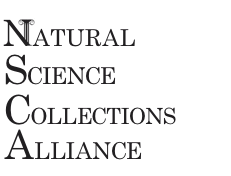Envisioning a Natural History Collections Action Center
The 2020 report from the National Academies of Science, Engineering, and Medicine (NASEM), Biological Collections: Ensuring Critical Research and Education for the 21st Century, called for the establishment of a national Action Center for Biological Collections. This recommendation was supported by the U.S. Congress in the historic law CHIPS and Science Act of 2022. In 2023, a series of webinars and national workshops brought together around 300 biological collections curators, collections managers, museum leaders, research and early career professionals, Artificial Intelligence (AI) experts, and related stakeholders to envision the features and functions of such an action center. Recommendations from these workshops were synthesized into a white paper.
White Paper: Envisioning a Natural History Collections Action Center, 2023
COVID-19 Impacts on Biodiversity Science Collections
The Natural Science Collections Alliance, American Institute of Biological Sciences, Biodiversity Collections Network (BCoN), and Society for the Preservation of Natural History Collections (SPNHC) surveyed individuals affiliated with US biodiversity science collections to better understand the effects of COVID-19 related disruptions and closures on biodiversity research and education collections, and the people who use and care for these scientific resources. Read about the results from the surveys below.
COVID-19 Impacts on Biodiversity Science Collections.
Operational Status, Economic Impacts, and Plans for Re-Opening.
NSC Alliance Publications
Read special reports and fact sheets on science collections by NSC Alliance.
BioScience Special Collection on Natural History Collections
The journal BioScience now has a special collection of articles available that highlights some of the exciting new ways scientists and educators are mobilizing and using biodiversity data from natural history collections.
Natural History Collections: Advancing the Frontiers of Science
Biodiversity Collections Network
The National Science Foundation has supported efforts by the biological collections community to make biocollections and their associated data more accessible. A series of workshops of biocollection experts resulted in a community-wide initiative to develop a Biodiversity Collections Network (BCoN). BCoN was a five-year national initiative funded by the U.S. National Science Foundation to support the development of a new, sustainable community of practice that will ensure that all U.S. biodiversity collections are digitally available for research, education, informed decision-making, and other scholarly and creative activities. The final report from BCoN was released in April 2019.
Extended Specimen Report: Extending U.S. Biodiversity Collections to Promote Research and Education, 2019
Lendemer, J. et al. The Extended Specimen Network: A Strategy to Enhance US Biodiversity Collections, Promote Research and Education. BioScience, Volume 70, Issue 1, January 2020, https://doi.org/10.1093/biosci/biz140
NIBA Implementation Plan, 2013 (Executive Summary)
NSC Alliance Briefings on Digitizing Scientific Collections
In recent years, NSC Alliance has held two briefings for Congress, federal agency personnel, and nongovernmental organization representatives about the importance of the nation’s natural science collections. The briefings explored how scientists and natural science collections managers are using new technology to digitize the nation’s natural science collections in an effort to increase access to these irreplaceable resources for research, education, and to inform our understanding and response to complex environmental problems.
View the presentations from the 2015 briefing.
Learn more about the 2012 event.
Interagency Working Group on Scientific Collections
The White House Office of Science and Technology Policy (OSTP) recognized the value of scientific collections by commissioning the Interagency Working Group on Scientific Collections (IWGSC). In a report released in December 2008, the IWGSC acknowledged the diversity of the hundreds of scientific collections owned and maintained by federal agencies. The working group found that these scientific collections are essential to supporting agency missions and are thus vital to supporting the global research enterprise.
Economic Analyses of Federal Scientific Collections, 2020
The Unique Role of Federal Scientific Collections (Blue Report), 2023
National Science Foundation Survey of Scientific Collections
The National Science Foundation (NSF) conducted a survey of the status of 611 scientific collections whose home institutions received funding from NSF since 1985. The survey, which was conducted in conjunction with the efforts of the Interagency Working Group on Scientific Collections, highlights the challenges facing biological, mineral, cell/tissue, and social science collections.
Museum and Collections Funding Agencies
The National Science Foundation (NSF) is an independent federal agency created to promote the progress of science.
The Institute of Museum and Library Services is the primary source of federal support for the nation’s 122,000 libraries and 17,500 museums.
U.S. and International Collections Partnerships
The Global Biodiversity Information Facility (GBIF) is an international government-initiated and funded initiative focused on making biodiversity data available to all and anyone, for scientific research, conservation and sustainable development.
This registry of scientific collections builds on GRSciColl, a comprehensive, community-curated clearinghouse of collections information originally developed by Consortium of the Barcode of Life (CBOL).
Integrated Digitized Biocollections (iDigBio) is the National Resource for Advancing Digitization of Biodiversity Collections (ADBC) funded by the National Science Foundation. Through ADBC, data and images for millions of biological specimens are being made available in electronic format for the research community, government agencies, students, educators, and the general public.

